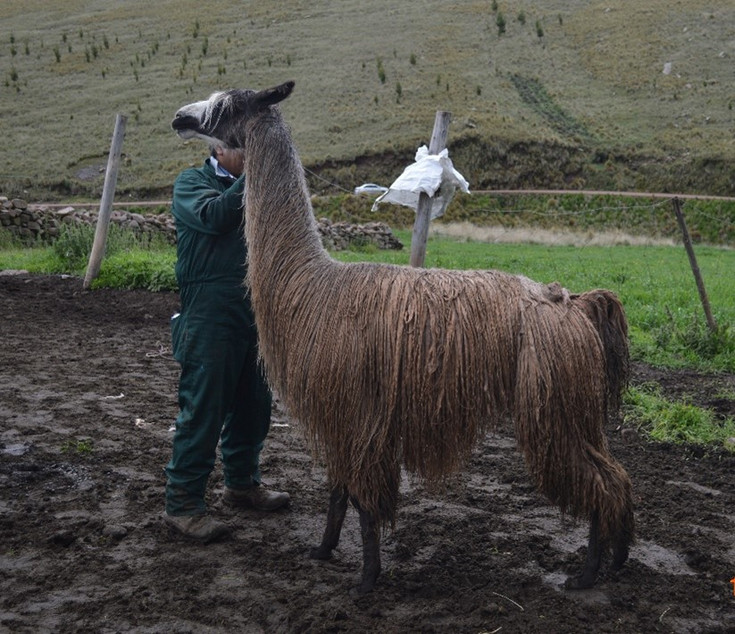A third breed? Suri llama farming in the Peruvian Andes.
SUPERVISOR: Maria WURZINGER
PROJECT ASSIGNED TO: Laurens VAN DER GIESSEN
In Peru, llama (Lama glama) farming has been practiced for thousands of years and continues to play an important role in the livelihoods of many, especially poor, rural communities. Llamas contribute to local food systems, especially in extensive production environments not suited for other types of farming (Wurzinger & Gutierrez, 2017). Even though 84,000 Peruvian families are directly dependent on llama farming for the number of llamas in Peru has been steadily declining (Gutierrez et al., 2018). Nevertheless, Peruvian farmers maintain a cultural and economic connection to this particular livestock species (Rodríguez-Huanca et al., 2024).
Since official recording began, the number of officially recognized llama breeds in Peru -and internationally- has remained unchanged. Currently, only the Chaku (wool type) and the Q’ara (meat type) are recognized by the Peruvian government (Ministerio de Agricultura, 2011), while the existence of a third, intermediate breed is mentioned in literature (Canaza-Cayo et al., 2015; Iñiguez et al., 1998; Llacsa Mamani & Ibañez Quispe, 2022).
This does not mean that there aren’t other types of llamas that could be classified as a breed. For over 2 decades, a small group of farmers have been managing a group of llamas they believe to be a third and separate type, the Suri llama.
Suri llamas exhibit distinct phenotypic characteristics, the most notable being their long, lustrous, and slick locks that lie parallel to the body (Figure 1).While their long fleece could make it a promising option for fibre production, the farmers currently prioritize breeding the Suris for their relatively gentle temperament. Their docile demeanour makes them a good companion for tourists who hike the infamous Inca Trail.
While some suggest that the Suri llama is just a crossbreed between a Suri alpaca and a Chaku llama, others believe it is an ancient breed. The farmers point to historical evidence such as ceramic figurines and mummies from pre-Hispanic civilizations resemblingthe Suri llamas alive today.
Obtaining official recognition that these animals are a separate breed would help farmers bringtheir animals and their products to market andprovide a significant opportunity for conserving a breed now represented by only a few hundred individuals.
Especially as the llama population decreases, it is vital to protect the genetic variation present in current populations, as losing it once would mean losing it forever.
This Phd project aims to document the Suri llama’s history, management practices, and genetic strategies for conservation, exploring the possibility of its future recognition as a distinct llama breed. Interviews with farmers and stakeholders, including researchers from the Peruvian Institute of Agrarian Innovation (INIA), are conducted, and the collected information is translated for analysis. By combining results from the field with studies on the Suri llama’s genetic variation, a case can be made for its recognition as an official llama breed.

Figure 1: Suri llama with the coat color ‘Café oscuro’
References:
Canaza-Cayo, A.W., Huanca T, Gutiérrez J.P., Beltrán P.A. (2015). Modelling of growth curves and estimation of genetic parameters for growth curve parameters in Peruvian young llamas (Lama glama), Small Ruminant Research, 130, pp. 81–89. doi.org/10.1016/j.smallrumres.2015.01.026.
Gutierrez, G.; Gutierrez, J.; Huanca, T.; & Wurzinger, M. (2018). Challenges and opportunities of genetic improvement in alpacas and llamas in Peru. En Proceedings of the World Congress on Genetics Applied to Livestock Production, 11, 762. Wageningen Academic Publishers
Iñiguez, L.C., Alem R., Wauer A., Mueller J., (1998). Fleece types, fiber characteristics and production system of an outstanding llama population from Southern Bolivia, Small Ruminant Research, 30(1), pp. 57–65. doi.org/10.1016/S0921-4488(98)00079-0.
Llacsa Mamani, J. and Ibañez Quispe, V. (2022). Caracterización de llamas k’aras y ch’acus al tercer mes de edad en el cip – la raya, una – puno, Ciencia Latina Revista Científica Multidisciplinar, 6(5), pp. 3468–3489. doi.org/10.37811/cl_rcm.v6i5.3333.
Ministerio de Agricultura (2011). Reglamento de los registros genealógicos de alpacas y llamas del Perú (RGALLP). Anexo II - Estándares de llamas de las razas K'ara y Chaqu. (Decreto Supremo Nº 022-2005-AG). Lima – Perú.
Rodríguez-Huanca, F. H., Nina Mojo, C. A., Carlo Lozada, L. A., Quispe Huanca, M. P., Perez-Guerra, U. H., Manrique Quispe, Y. P., Canaza-Cayo, A. W., & Roque Almanza, L. (2024). Fibre Medullation Characteristics in Peruvian Llamas (Lama glama), Indian Journal of Animal Research (Of). doi.org/10.18805/IJAR.BF-1801.
Wurzinger, M., Gutiérrez, G. (2017). Analysis of a multi-stakeholder process during the start-up phase of two community-based llama breeding programs in Peru. Livestock Research for Rural Development. Volume 29, Article #188. Retrieved October 5, 2017, www.lrrd.org/lrrd29/10/mari29188.html
